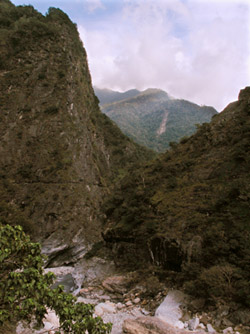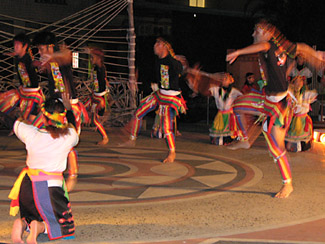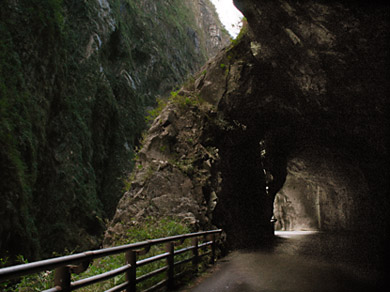Highlights and Lowlights on the East Coast (Overview)
 Taroko Gorge |
My family took a break from our trip in Taipei with a 4-day tour of the scenic East Coast, known for its waterfalls, mountain scenery and aboriginal tribes, and a favorite area of the locals to promote. The benefit of traveling with my parents is faster travel by private car and opulent hotels. The downside is very little control over what sights were visited.
 Dancers from Bunong tribe |
 Tunnels of Nine Turns, Taroko Gorge |
Some suggestions
I would definitely suggest that if you take a tour, to find one that will let you create your own itinerary—basically just using the agency to book hotels and transportation. The problem with locals not necessarily knowing the best features of their own country is not limited to Taiwan; one of my friends tells me that when she goes home to Bangladesh everyone is particularly proud to show off the local Pizza Hut.In Taiwan food is such a source of pride that wouldn't be an issue—people kind of pity those who can't appreciate good Chinese food. But the locals do seem to forget that this island contains natural wonders like the largest mountain in Northeast Asia (Yushan) and cultural interests such as untouched traditional streets, tea fields and local artisans. Instead, there's a prevailing desire to rush tourists through sights like Taroko Gorge, and push people toward small museums or shopping areas. It's very weird.
If you want to travel totally independently, the only guidebook available is Lonely Planet. If you are considering taking tours for ease in transportation, Insight's guide is a bit more inspiring...chock full of photos and featuring some locales not mentioned in LP.